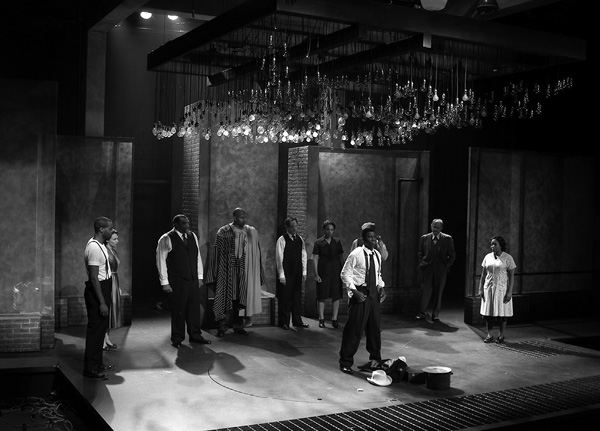
INVISIBLE MAN
first performed on January 12, 2012
Court Theatre, Chicago, Il
performed 101 times in 2012
TROY HOURIE
Oren Jacoby, Chris McElroen, Jacqueline Firkins, John Culbert, Joshua Horvath, Alex Koch, Jocelyn Prince, Sara Gammage, Jonathan Nook, Teagle F. Bougere, Lance Stuart Baker, Kimm Beavers, Tracey N. Bonner, Chris Boykin, Kenn Head, Bill McGough, Paul Oakley Stovall, A.C Smith, Julia Watt
Toronto, Canada / New York, NY / Chicago, IL / Washington, DC / Boston, MA
961831263t961831263r961831263o961831263y961831263h961831263o961831263u961831263r961831263i961831263e961831263@961831263g961831263m961831263a961831263i961831263l961831263.961831263c961831263o961831263m
troyhourie.com
INVISIBLE MAN
TROY HOURIE
“Invisible Man” is the first authorized stage adaptation of Ralph Ellison’s seminal novel. As the scenic designer for the production, I was faced with the daunting challenge of creating a physical environment conducive to the telling of an epic tale of an anonymous black man’s journey in search of his identity, a metaphor Ellison created for the American experience.
The play itself is cinematic in nature; the set embodies numerous locations and is capable of transitioning in a rapid but fluid manner. The set is conceived as a construct built from Invisible Man’s memories. Inspired by Romare Bearden’s work, the set is a collage of visual elements abstracted from significant moments in the protagonist’s life. It is another “character” in the piece, requiring the ensemble to embrace and work with it as another performer.
Invisible Man begins to tell his story in darkness, his face revealed by the light of a single light bulb. I designed a ceiling of lights, composed of 1369 light bulbs, which illuminated the space to reveal him secluded in his Hole, a cellar space beneath the streets of Harlem. The Hole is delineated by several rolling scrims that act as carriages for smaller scenic units, these can be removed to establish each of the central moments in the storytelling.
A drag on a marijuana joint cues Invisible Man’s recollection of his time in the South. The world of the Hole explodes to reconfigure into various locales. His view of his time in the South is tainted; the actual places are not as vivid and colorful as his memories. Castered scenic units; props and flown light fixtures both define the location and motivate the action. The scrims’ surfaces are textured with projected images and often reveal the performers lingering behind them. Scenic elements appear and disappear as needed, but often dwell around the edges of the stage, ever-present as Invisible Man builds his history.
As Invisible Man reaches Harlem, the set develops into a labyrinth of activity and motion. Everyone lives on top of one another and people become invisible in the mass of activity. This world slowly erodes as he confronts defeating circumstances, building into the chaos of the Harlem riot that ends the play when the light ceiling descends onto the action. To escape, Invisible Man is thrust underground into the Hole established at the top of the show.